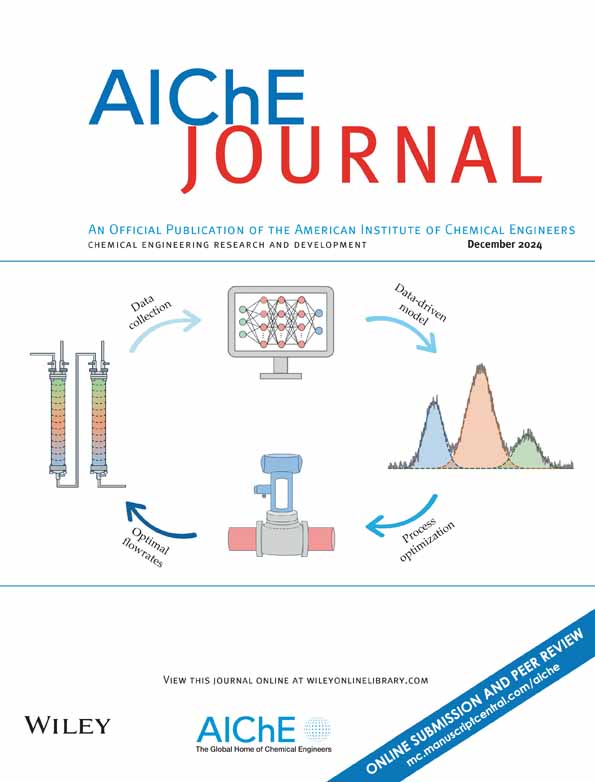用于贵金属还原和温度控制的低温NH3分解反应器的多尺度建模
IF 3.5
3区 工程技术
Q2 ENGINEERING, CHEMICAL
引用次数: 0
摘要
氨是一种无碳能源载体,氢含量为17.6 wt%。基于低温催化剂的高效紧凑型氨分解反应器的设计是实现工业氨制氢的关键。在这项工作中,通过连接催化剂的颗粒尺度特征和反应器性能,建立了一个多尺度模型,以充分理解氨分解过程。系统评价了催化剂孔隙率和孔径对反应器尺寸、贵金属负载、温度和热流分布的影响。进一步提出了一种改进的反应器设计,采用两级蛋壳型低温催化剂填充的分段式反应器,使贵金属用量减少了61.6%,温度下降了42.9 K。这种分割策略平衡了反应速率和热流密度,表明了高效、经济、可靠的氨制氢的巨大潜力。本文章由计算机程序翻译,如有差异,请以英文原文为准。
Multiscale modeling of a low‐temperature NH3 decomposition reactor for precious metal reduction and temperature control
Ammonia is a carbon‐free energy carrier with 17.6 wt% hydrogen content. The design of an efficient and compact ammonia decomposition reactor based on low‐temperature catalysts is the key to realizing industrial hydrogen production from ammonia. In this work, a multiscale model was developed by bridging the particle‐scale characteristics of catalysts and reactor performances, to fully comprehend the ammonia decomposition process. The effects of catalyst porosity and pore diameters on the reactor size, precious metal loading, and the profile of temperature and heat flux were systematically evaluated. An improved reactor design was further proposed by applying the segmented reactor packed with two‐stage egg‐shell‐type low‐temperature catalysts, which decreased the precious metal usage by 61.6% and the temperature drop by 42.9 K. This segmentation strategy balanced the reaction rate and heat flux, indicating a significant potential in highly efficient, economical, and reliable hydrogen production from ammonia.
求助全文
通过发布文献求助,成功后即可免费获取论文全文。
去求助
来源期刊

AIChE Journal
工程技术-工程:化工
CiteScore
7.10
自引率
10.80%
发文量
411
审稿时长
3.6 months
期刊介绍:
The AIChE Journal is the premier research monthly in chemical engineering and related fields. This peer-reviewed and broad-based journal reports on the most important and latest technological advances in core areas of chemical engineering as well as in other relevant engineering disciplines. To keep abreast with the progressive outlook of the profession, the Journal has been expanding the scope of its editorial contents to include such fast developing areas as biotechnology, electrochemical engineering, and environmental engineering.
The AIChE Journal is indeed the global communications vehicle for the world-renowned researchers to exchange top-notch research findings with one another. Subscribing to the AIChE Journal is like having immediate access to nine topical journals in the field.
Articles are categorized according to the following topical areas:
Biomolecular Engineering, Bioengineering, Biochemicals, Biofuels, and Food
Inorganic Materials: Synthesis and Processing
Particle Technology and Fluidization
Process Systems Engineering
Reaction Engineering, Kinetics and Catalysis
Separations: Materials, Devices and Processes
Soft Materials: Synthesis, Processing and Products
Thermodynamics and Molecular-Scale Phenomena
Transport Phenomena and Fluid Mechanics.
 求助内容:
求助内容: 应助结果提醒方式:
应助结果提醒方式:


